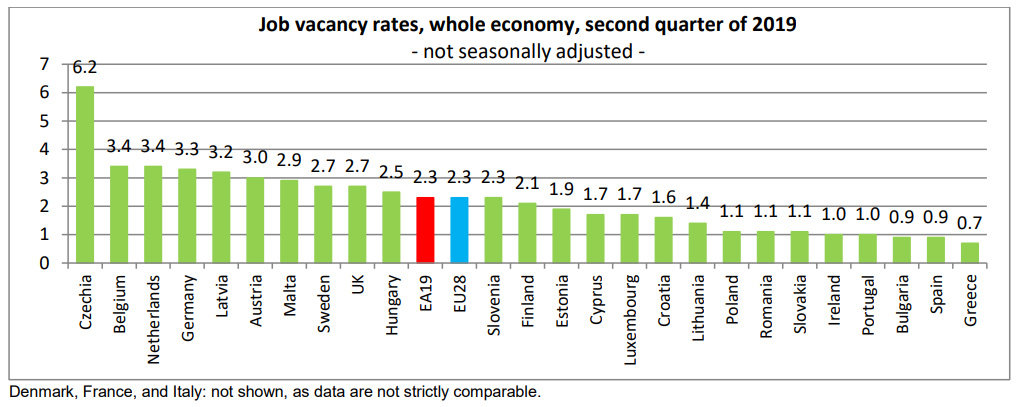Finland's job vacancy rate was 2.1% in the second quarter of 2019 (April to June), much lower from the previous quarter (2.8%) but stable compared to the second quarter of 2018, according to the latest figures published by the European statistical office (Eurostat).
Examined by main economic activity branches, in the April to June period the greatest shortage of labour was recorded in the services (2.4%) and industry and construction (2.2%) sectors.
Finland's vacancy rate in the second quarter of the year was two percentage points lower than the European average.
In the euro area (19 Member States that share the single currency), the job vacancy rate for the same period was 2.3%, stable compared with the previous quarter and up from 2.1% in the second quarter of 2018. In the whole European Union (EU), the job vacancy rate was also 2.3%, stable compared with the previous quarter and up from 2.2% in the second quarter of 2018.
Examined by activity branches, in the euro area the average job vacancy rate in the second quarter was 2.6% in services and 2% in industry and construction. In the 28 EU Member States, the average rate was also 2.6% in services and 2.1% in industry and construction.

Source: Eurostat.
Member States
Among the Member States for which comparable data are available, the highest job vacancy rates in the second quarter of 2019 were recorded in Czechia (6.2%), Belgium and the Netherlands (both 3.4%).
In contrast, the lowest rates were observed in Greece (0.7%), Bulgaria and Spain (both 0.9%).
Compared with the same quarter of the previous year, the job vacancy rate in the second quarter of 2019 rose in ten Member States, remained stable in nine and fell in nine others.
The largest increases were registered in Czechia (0.8 percentage points), Latvia (0.5 percentage points), Germany and Malta (both 0.4 percentage points).
The largest decreases were registered in Croatia and Slovenia (both -0.3 percentage points).










